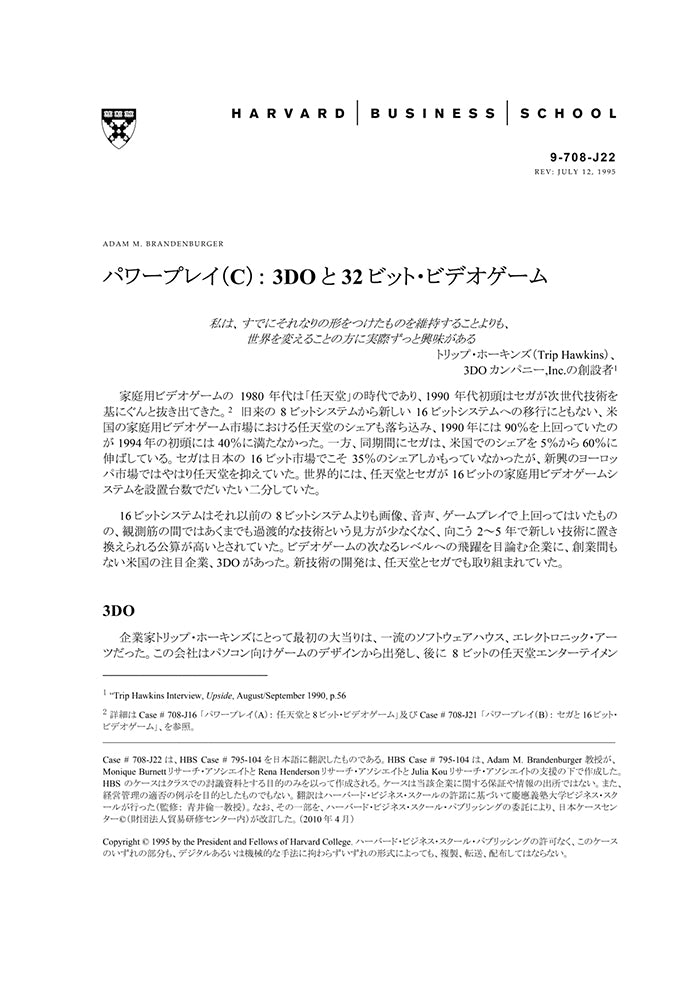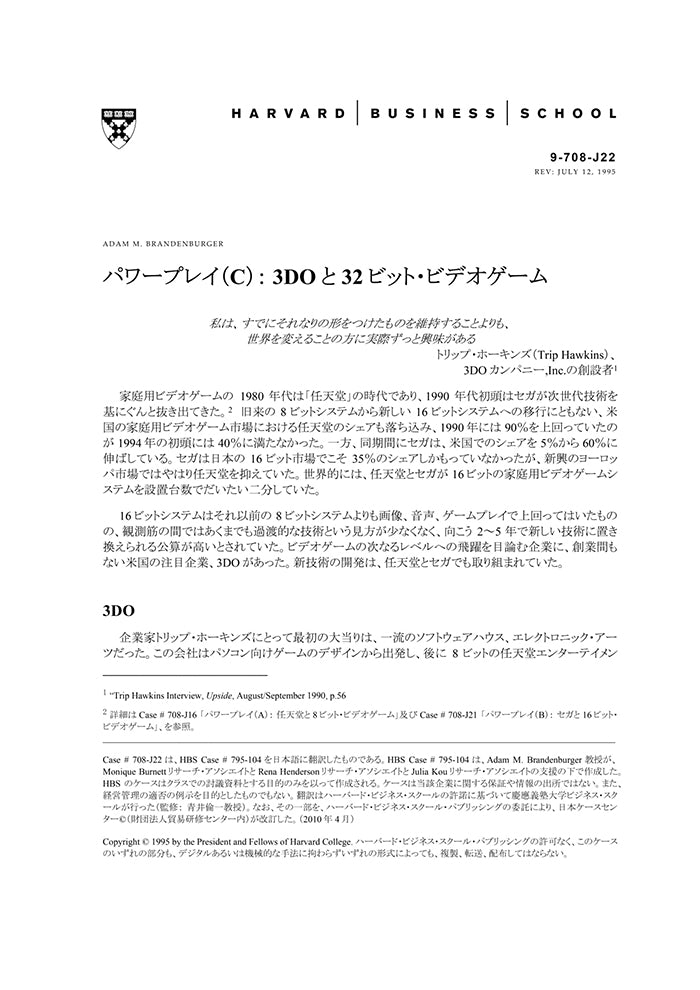パワープレイ(C): 3DO と32 ビット・ビデオゲーム
受取状況を読み込めませんでした
家庭用ビデオゲームの1980年代は「任天堂」の時代であり、1990年代初頭はセガが次世代技術を基にぐんと抜き出てきた。1994年までには任天堂とセガが世界の16ビットのビデオゲームで世界市場を対等に二分していた。16ビットシステムはそれ以前の8ビットシステムよりも画像、音声、ゲームプレイで上回ってはいたものの、観測筋の間ではあくまでも過渡的な技術という見方が少なくなく、向こう2~5年で新しい技術に置き換えられる公算が高いとされていた。本ケースでは32ビット・プラットホームの促進に取り組むアメリカの注目の新進企業、3DOに焦点をあて、また任天堂、セガ、ソニー、フィリップス、アタリによる新技術にも言及する。3DOはゲームの範囲を広げることにより、既存のプレイヤー、任天堂とセガに対抗するチャンスを創り出した。3DOはどのようにそのチャンスを活かしたのだろうか。 The 1980s were the "Nintendo" decade in video-games, while the early 1990s saw Sega rise to prominence on the basis of next-generation, 16-bit technology. By early 1994, Nintendo and Sega split the worldwide installed base of 16-bit home video-game systems about equally. Still, while 16-bit systems offered superior graphics, sound, and game play over the earlier 8-bit systems, many observers considered them a transitional technology, likely to be superseded in the next two to five years. The case focuses on the efforts of 3DO, a high-profile U.S. start-up, to promote a new 32-bit platform. Also describes the new technologies being developed by Nintendo, Sega, Sony, Philips, and Atari. By expanding the scope of the game, 3DO engineered a window of opportunity with respect to the established players, Nintendo and Sega. Focuses on how 3DO chose to exploit that opportunity. Illustrates, in particular, the strategy of bringing new players into a game. Planning to make money from licensing the software technology, 3DO gave away the hardware technology for free.
【書誌情報】
ページ数:11ページ
サイズ:A4
商品番号:HBSP-708J22
発行日:1995/4/10
登録日:2010/5/14

